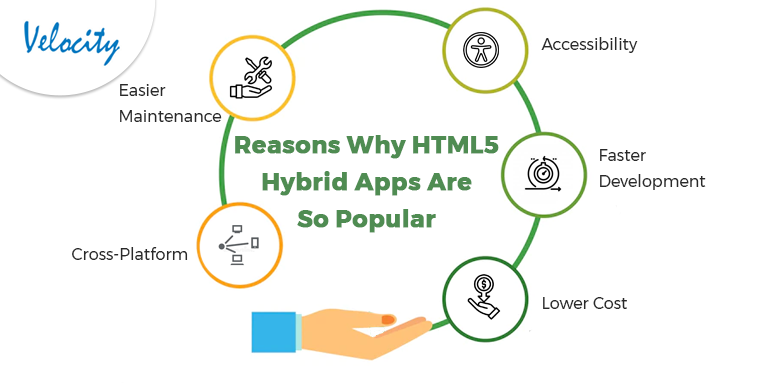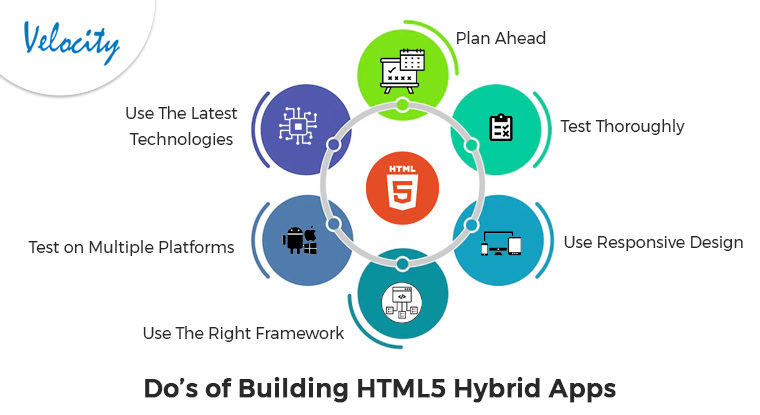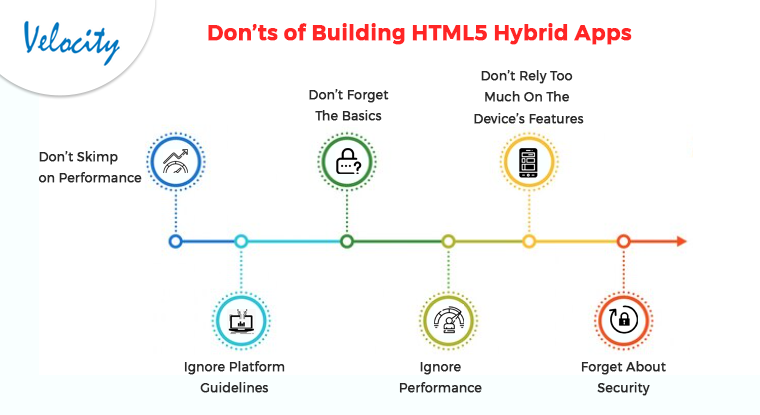With the release of Apple’s iOS8 and Google’s Android L, hybrid app development has become more popular than ever. Hybrid apps are developed using web technologies like HTML5, CSS3, and JavaScript, and they can be run on multiple platforms (iOS, Android, Windows Phone, etc.) without having to rewrite the code. While hybrid apps offer many advantages over traditional native apps, there are also some important things to keep in mind when building them. This blog post will discuss the do’s and don’ts of hybrid app development!
Reasons Why HTML5 Hybrid Apps Are So Popular
1. Cross-Platform –
The most significant advantage of HTML5 hybrid apps is their cross-platform capabilities. Developers can create a single codebase that can be used to run an app on multiple platforms. This means less development time and cost!
2. Easier Maintenance –
The second benefit is that hybrid apps are easier to maintain than native apps. The same codebase can be used for different platforms, making it much easier for developers to update the app or fix bugs across all versions.
3. Accessibility –
The third benefit is that hybrid apps are more accessible than native apps. Since they use web technologies, users don’t need to download a separate version for each platform; instead, they can access the app via the web browser.
4. Faster Development –
The last benefit is that developing hybrid apps is typically faster than native app development. The same codebase can be used for multiple platforms, making it easier for developers to quickly iterate and launch new features.
5. Lower Cost –
The final benefit is that hybrid apps are typically cheaper to develop than native apps. The same codebase can be used for multiple platforms, resulting in lower development costs.
Do’s of Building HTML5 Hybrid Apps
1. Plan Ahead –
When building a hybrid app, planning and considering all the features your app will need is essential. Make sure you plan the user experience and design before coding!
2. Test Thoroughly –
It is also essential to thoroughly test your app on each platform before launching it. This ensures that any bugs or issues are caught early and can be fixed quickly.
3. Use Responsive Design –
The last step is ensuring that your app is responsive. Responsive design allows your app to look and feel good on different screen sizes, providing a better user experience.
4. Use The Right Framework –
The first is to ensure you choose the proper framework for your needs. Various frameworks are available (such as PhoneGap, Appcelerator, etc.), so make sure you research which is best suited for your project.
5. Test on Multiple Platforms –
The second is to test your app on multiple platforms before releasing it to ensure compatibility and performance across all devices. This will help you identify any potential issues early on and avoid costly mistakes in the future.
6. Use The Latest Technologies –
The third is to ensure you are using the latest web technologies when building your app. HTML5 and CSS3 have come a long way in past years, so take advantage of their features to create a modern-looking and polished app.
Don’ts of Building HTML5 Hybrid Apps
1. Don’t Skimp on Performance –
The first thing is to not skimp on performance. The codebase for hybrid apps may be smaller than native apps, but it still needs to perform well for users to have a good experience. Make sure you’re optimizing your code for maximum speed and efficiency!
2. Don’t Forget The Basics –
The second thing is not to forget the basics. Ensure you properly structure your HTML, CSS and JavaScript code to ensure clean, organized code that is easy to read and maintain.
3. Don’t Rely Too Much On The Device’s Features –
The third thing is to not rely too heavily on the device’s features when building a hybrid app. While taking advantage of a device’s specific capabilities (eg, an accelerometer or GPS) may be tempting, these often require native coding and may lead to compatibility issues across different platforms.
4. Ignore Platform Guidelines –
When building a hybrid app it is essential not to ignore the guidelines of each platform. Ensure your app adheres to all the guidelines for a successful launch!
5. Ignore Performance –
The second doesn’t is ignoring performance considerations. It’s important to consider how well your app will perform on different devices and operating systems; otherwise, users may not be satisfied with their experience.
6. Forget About Security –
The last don’t is forget about security when developing an HTML
Now that we’ve discussed the benefits of HTML5 hybrid apps, let’s look at the do’s and don’ts of building them.
Building HTML5 hybrid apps can be a great way to create cross-platform apps without having to rewrite the code for each platform. However, it’s important to remember the do’s and don’ts of hybrid app development if you want to create a compelling and flourishing app. Following the tips above, developers can ensure they build a high-quality app that performs well across all devices!
Final Words
Developing HTML5 hybrid apps can be a great way to create cross-platform applications that are both powerful and cost-effective. The key is to remember the do’s and don’ts of building these apps to ensure your app is successful and enjoyable for users. Any developer can create a fantastic HTML5 hybrid app by following the tips outlined above!











